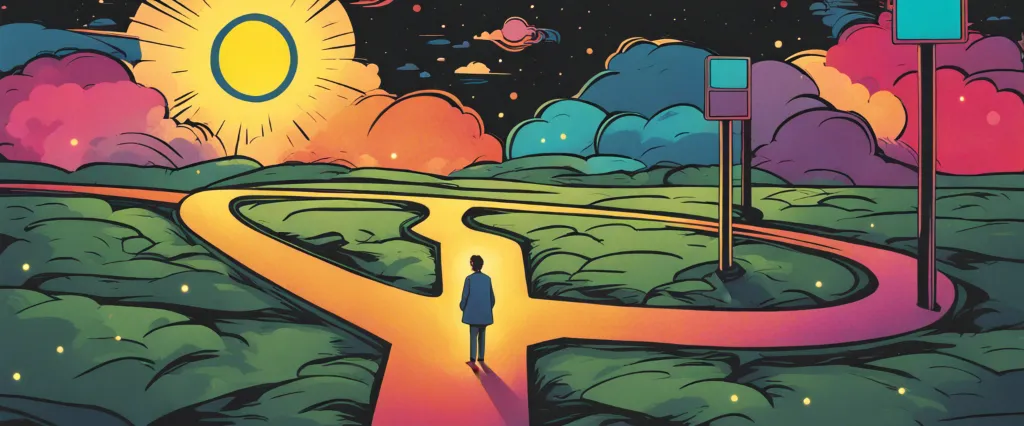
In “The Demon-Haunted World: Science as a Candle in the Dark,” renowned astrophysicist Carl Sagan invites readers on a remarkable journey through the wonders of scientific thinking, skepticism, and the perils of superstition. As an American astronomer, cosmologist, and highly influential science communicator, Sagan masterfully combines his passion for science with his deep concern for the erosion of critical thinking in modern society. Through this thought-provoking book, Sagan aims to equip readers with the tools to navigate a world increasingly plagued by irrational beliefs and pseudoscience, championing the power of scientific inquiry and evidence-based reasoning.
Chapter 1: The Demon-Haunted World
Chapter 1 of “The Demon-Haunted World: Science as a Candle in the Dark” by Carl Sagan seeks to set the stage for the rest of the book by addressing the importance of scientific thinking and exploration in a world full of irrationality and pseudoscience. Sagan begins by exploring the prevalence of irrational beliefs, highlighting examples such as alien abduction, astrology, and faith healers.
He emphasizes the necessity of a skeptical mindset, arguing that skepticism is an essential tool for uncovering truth. Sagan celebrates the scientific method, which is based on observing, measuring, experimenting, testing, and revising theories in the pursuit of knowledge.
Furthermore, Sagan laments the danger posed by the lack of scientific literacy in society, emphasizing the importance of education in promoting critical thinking and scientific reasoning. He discusses the detrimental effects of a lack of understanding and appreciation for science and its achievements, leading to a susceptible population that falls victim to misinformation, fear, and deception.
Sagan urges readers to embrace scientific thinking to better navigate the complexities of the modern world. He argues that science provides an antidote to superstition and serves as a candle in the dark, illuminating the path towards truth and enlightenment.
Overall, Chapter 1 serves as an introduction to the central themes of “The Demon-Haunted World,” highlighting the need for skepticism, scientific literacy, and critical thinking in combating irrationality and understanding the wonders of the natural world.
Chapter 2: Science and Skepticism
In Chapter 2 of “The Demon-Haunted World” by Carl Sagan, titled “Science and Skepticism,” Sagan explores the importance of critical thinking and scientific inquiry, especially in an era filled with pseudoscience, superstition, and misinformation.
Sagan begins with an anecdote about a young girl who asked him about witches and angels. This encounter prompts him to emphasize the need for skepticism, as people often accept extraordinary claims without questioning them. He defines skepticism as a way of thinking that involves questioning and examining evidence before accepting a claim.
He highlights the dangers of unsubstantiated beliefs and their impact on society, ranging from superstitions influencing major life decisions to pseudosciences threatening public health. Sagan emphasizes the significance of scientific methodology in combating these issues, as it offers a systematic approach to understanding the natural world based on evidence and reason.
Sagan criticizes the societal expectation of “open-mindedness” as a virtue, encouraging readers to distinguish between open-mindedness and gullibility. He argues that true open-mindedness requires an equal willingness to accept or reject claims based on evidence, as opposed to accepting them based on personal biases or anecdotes.
Throughout the chapter, Sagan delves into various skeptical tools, such as logic and parsimony, that aid in distinguishing between valid scientific claims and unwarranted beliefs. He emphasizes that skepticism is not synonymous with closed-mindedness, but rather a tool for intellectual exploration and growth.
In conclusion, Chapter 2 of “The Demon-Haunted World” underscores the importance of skepticism and scientific thinking in an era plagued by misinformation. It urges readers to critically evaluate claims before accepting them, promoting a culture that relies on evidence, reason, and curiosity.
Chapter 3: The Fine Art of Baloney Detection
Chapter 3 of “The Demon-Haunted World” by Carl Sagan, titled “The Fine Art of Baloney Detection,” explores the importance of critical thinking and skepticism in our daily lives. Sagan begins by emphasizing the need for a skeptical mindset, as humans are prone to fallacies, superstitions, and accepting information without proper evidence.
He describes different tools and strategies that can help us discern between valid and invalid claims. The first tool is the importance of independent confirmation, where information should be cross-checked and verified through multiple sources. Sagan then encourages readers to scrutinize the evidence itself, questioning its reliability, credibility, and potential biases. He highlights the significance of logical fallacies, such as ad hominem attacks or appeals to authority, and urges readers to be cautious when encountering them.
Sagan also emphasizes the need for hypothesis testing and falsifiability. He explains that scientific claims should always be open to scrutiny, allowing for the possibility of being proven wrong. This mindset stands in stark contrast to dogmatic beliefs that refuse to engage in critical analysis.
Furthermore, Sagan warns against the dangers of personal biases and cognitive dissonance, highlighting the importance of being aware of our own tendencies to ignore contradictory evidence or conform to social pressures. He encourages readers to embrace open-mindedness and actively seek out diverse opinions in order to challenge their own beliefs.
Ultimately, Sagan stresses the significance of critical thinking, scientific literacy, and an inquisitive mindset in navigating a world filled with misinformation and pseudoscience. By cultivating these skills, individuals can better evaluate the validity of claims and make more informed decisions based on evidence.
Chapter 4: The Dark Side of Science

Chapter 4: The Dark Side of Science from the book “The Demon-Haunted World” by Carl Sagan delves into the dangers and potential negative implications that arise when science is misused or misinterpreted. Sagan highlights the notion that scientific progress does not automatically guarantee moral or ethical advancement. Instead, science can be utilized to support dubious claims or mislead the public, leading to negative consequences for society.
Sagan begins by discussing how pseudoscience disguises itself as genuine scientific inquiry, often taking advantage of individuals’ lack of scientific literacy. He provides numerous examples, including astrology, witchcraft, and UFO sightings, to emphasize how people can be swayed by seemingly logical but baseless claims.
The author also addresses the conflict between science and religion, noting instances where religious beliefs obstruct scientific progress, potentially stunting society’s advancement. Sagan urges a mutual understanding, one that acknowledges the importance of both scientific inquiry and the value of religious and philosophical ideas.
Furthermore, Sagan critiques the impact of multinational corporations on science. Drawing attention to the potential manipulation of scientific research by these corporations, he highlights examples such as the tobacco industry’s denial of the link between smoking and cancer. Sagan argues that science should be independent and objective, free from the influence of economic interests.
Finally, Sagan emphasizes the importance of skeptical thinking and critical reasoning as the safeguards against the misuse and misinterpretation of science. He encourages individuals to question and challenge claims, to demand evidence and adherence to scientific methodology.
In summary, Chapter 4 of “The Demon-Haunted World” warns of the dangers of misusing and misinterpreting science. Sagan encourages the reader to be vigilant, promoting scientific literacy and the application of critical thinking to distinguish between sound scientific evidence and mere pseudoscience.
Chapter 5: The Marriage of Skepticism and Wonder
Chapter 5 of “The Demon-Haunted World” by Carl Sagan, titled “The Marriage of Skepticism and Wonder,” focuses on the importance of maintaining a balance between skepticism and wonder when navigating the world around us. Sagan argues that skepticism is essential for critical thinking and the rejection of unfounded beliefs, while wonder is crucial for cultivating curiosity and appreciating the awe-inspiring complexity of the universe.
Sagan begins by emphasizing the prevalence of scams, pseudoscience, and irrational beliefs in society, which he attributes to a lack of skepticism. He details various examples of pseudoscientific claims and encourages readers to question these assertions rather than accepting them at face value. Skepticism, he argues, allows us to evaluate evidence and separate fact from fiction.
However, Sagan warns against excessive skepticism, which can lead to cynicism and closed-mindedness. He asserts that wonder, or a sense of awe and fascination, is equally important for scientific and intellectual growth. Wonder helps to inspire curiosity, motivates us to explore the unknown, and fuels scientific discoveries.
Sagan also highlights the historical figures who successfully married skepticism and wonder, such as Galileo Galilei, who challenged the prevailing dogmas of his time while maintaining an appreciation for the beauty of the cosmos. He encourages readers to emulate these figures, approaching their investigations with both skepticism and wonder.
In conclusion, Sagan suggests that skepticism and wonder are not opposing forces, but rather complementary aspects of a healthy intellectual mindset. By combining critical thinking with an open-minded fascination for the world, we can embrace the wonders of the universe while also questioning and verifying the claims we encounter.
Chapter 6: The Tally of Nightmares
Chapter 6: The Tally of Nightmares of the book “The Demon-Haunted World” by Carl Sagan is focused on exploring humanity’s susceptibility to fear, superstition, and the detrimental impact it has on critical thinking and rational inquiry.
Sagan begins the chapter by discussing humanity’s inherent propensity for fear, which has shaped our evolutionary history. As a survival mechanism, fear and the ability to detect potential threats were crucial in our early years. However, Sagan emphasizes that in the modern world, this instinct can be easily exploited and manipulated by those who seek to control or deceive us. He highlights how fear is often used as a tool by politicians, marketers, and even some religious leaders to gain power or manipulate public opinion.
The chapter then delves into various examples of fears and superstitions that prevail in society. Sagan examines the belief in UFOs, alien abductions, and claims of paranormal phenomena, highlighting the lack of scientific evidence behind these claims. He explains that these beliefs often arise due to our natural inclination towards pattern recognition and our desire to attribute agency to unknown phenomena.
Sagan also discusses the dangers of misinformation and pseudoscience. He illustrates how erroneous claims, often spread through the media or through pseudo-scientific channels, can have real-life consequences. These range from the harmful effects of unproven medical treatments to the persistence of irrational beliefs that hinder scientific progress.
In conclusion, Chapter 6 of “The Demon-Haunted World” by Carl Sagan highlights the human susceptibility to fear and superstition and the negative impact it has on critical thinking. Sagan urges readers to be vigilant in questioning what they are told, to embrace scientific skepticism, and to rely on evidence-backed reasoning to navigate through the “tally of nightmares” that humanity collectively faces.
Chapter 7: The Dragon in My Garage
Chapter 7 of “The Demon-Haunted World” by Carl Sagan, titled “The Dragon in My Garage,” explores the concept of skepticism and the importance of evidence-based reasoning. Sagan starts by sharing a hypothetical scenario where he claims to have a fire-breathing dragon in his garage. He explains that although this may sound extraordinary, he can provide no evidence or proof of this dragon’s existence.
Through this analogy, Sagan challenges readers to question the claims made by others without supporting evidence. He highlights that many extraordinary claims are presented without any concrete proof, yet people often readily accept them based on faith or personal anecdotes. Sagan reminds us that personal conviction is not enough to establish the truth; it is evidence that holds the key.
To emphasize the need for critical thinking, Sagan discusses the various barriers that hinder skepticism. One significant barrier is the tendency to accept ideas based on our emotions, desires, or cultural beliefs, without critically examining them. Sagan also highlights the power of confirmation bias, where people selectively perceive and interpret evidence in a way that supports their preconceived notions.
Towards the end of the chapter, Sagan introduces the concept of “invisible but otherwise detectable” dragons. He explains that even though these creatures are supposedly invisible, there should still be specific measurable effects that we can observe. If no such effects are found, then claims about these dragons become unfalsifiable and therefore lack scientific credibility.
In summary, Chapter 7 of “The Demon-Haunted World” underscores the importance of skepticism and rational thinking. Sagan emphasizes the need for evidence-based reasoning and urges readers to be wary of extraordinary claims made without substantiating evidence. By challenging our beliefs and questioning the existence of metaphorical “dragons” in our lives, Sagan advocates for a more scientific and rigorous approach to understanding the world.

Chapter 8: The Baloney Detection Kit
Chapter 8: The Baloney Detection Kit of “The Demon-Haunted World” by Carl Sagan is an exploration of critical thinking and skepticism. Sagan emphasizes the importance of developing a toolkit to identify and refute fallacies, misinformation, and pseudoscience.
The author emphasizes the need for skepticism by highlighting numerous instances throughout history where people have fallen victim to hoaxes and unfounded beliefs. He introduces the concept of skepticism as a valuable tool to discern truth from fiction, encouraging readers to adopt a balanced, evidence-based approach.
Sagan provides practical guidelines for evaluating claims and ideas. He advises readers to question the reliability of the source, emphasizing the importance of peer-reviewed research, scientific consensus, and credibility. He cautions against the appeal to authority by encouraging readers to assess the evidence independently rather than blindly accepting claims made by experts.
The Baloney Detection Kit offers readers a set of essential critical thinking tools. Sagan stresses the significance of distinguishing correlation from causation and avoiding logical fallacies such as ad hominem attacks or the slippery slope fallacy. He promotes skepticism towards cherry-picked data and anecdotal evidence, highlighting the importance of statistical analysis and rigorous methodology.
Furthermore, Sagan encourages readers to cultivate a sense of wonder and curiosity while possessing a healthy degree of skepticism. He promotes the scientific method as a reliable way to uncover truth and warns against the dangers of pseudoscience and misplaced faith. By fostering critical thinking, Sagan believes individuals can combat ignorance and defend themselves against the perils of irrational thinking.
After Reading
In Carl Sagan’s thought-provoking book, “The Demon-Haunted World,” he takes readers on a journey through the dangers of scientific illiteracy and the importance of critical thinking. Sagan delves into the widespread belief in pseudoscience, supernatural phenomena, and the allure of irrational thinking. Through powerful anecdotes, Sagan emphasizes the need for scientific skepticism to combat these misleading and often harmful beliefs. He champions the scientific method as a means to uncover the truth and advocates for a society that values evidence-based reasoning over blind faith. Ultimately, “The Demon-Haunted World” leaves readers with a call to arms—to question, to interrogate, and to embrace the wonders of the natural world through the lens of science.
1. Sapiens: A Brief History of Humankind” by Yuval Noah Harari
In “The Power of Now,” Eckhart Tolle explores the concept of living in the present moment and finding inner peace. “Sapiens” takes a step back to examine the broader story of humanity, from our origins to the present day. Yuval Noah Harari brilliantly combines history, science, and philosophy to provide a thought-provoking perspective on the human journey. This book will challenge your assumptions about the world, leaving you with a deeper understanding of our species’ collective past and the challenges we face in the future.
2. Atomic Habits: An Easy & Proven Way to Build Good Habits & Break Bad Ones” by James Clear
After exploring the philosophy of essentialism in Greg McKeown’s “Essentialism,” it’s time to dive into the practical realm of habit formation. “Atomic Habits” by James Clear offers a systematic approach to creating positive change in our lives by focusing on small, incremental improvements. By helping us understand the science behind habits, Clear provides actionable strategies for breaking bad habits and building new ones. This book is a powerful tool for anyone seeking to redesign their routines and maximize their productivity.
3. Outliers: The Story of Success” by Malcolm Gladwell
Building on the themes explored in “The Compound Effect” by Darren Hardy, “Outliers” investigates the factors that contribute to extraordinary success. Malcolm Gladwell examines the stories of outliers—individuals who have achieved exceptional accomplishments—and unveils the hidden patterns and opportunities that allowed them to excel. With captivating storytelling and insightful analysis, this book challenges conventional wisdom about talent, hard work, and opportunity. If you’re interested in unlocking your full potential, “Outliers” is a must-read.
4. The Gene: An Intimate History” by Siddhartha Mukherjee
While “The Demon-Haunted World” sheds light on the wonders of scientific skepticism, “The Gene” delves into the mysteries of our genetic makeup. Siddhartha Mukherjee explores the history of genetics, from its origins to its latest breakthroughs, and examines the complex interplay between genes and environment. Through personal anecdotes, scientific discoveries, and ethical dilemmas, he paints a vivid picture of the revolutionary field of genetics. This book will broaden your understanding of what it means to be human and the profound implications of genetic research.
5. Thinking, Fast and Slow” by Daniel Kahneman
To further delve into the realm of critical thinking and cognitive biases introduced in “The Power of Now,” Thinking, Fast and Slow” by Daniel Kahneman is an essential choice. As a Nobel laureate in economics, Kahneman shares his groundbreaking research on the two systems that drive our thought processes: the intuitive and emotional “fast” system, and the deliberate, logical “slow” system. By understanding how these systems interact and influence our decisions, we can become more aware of our cognitive biases and make better choices. This book is an enlightening exploration of the human mind and a valuable guide for navigating the complexities of life.


